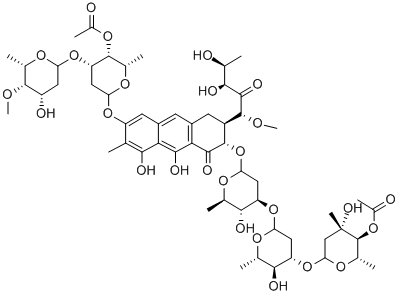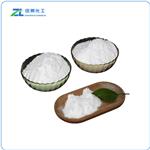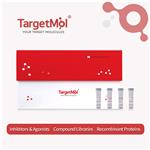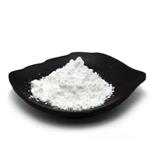Description
Chromomycin A
3 is an anthraquinone antibiotic and antitumor agent isolated from
S. griseus that is used as a fluorescent probe for DNA with excitation/emission spectra of 445/575 nm. Its DNA binding is specific to two or more contiguous GC base pairs, which makes it suitable for characterizing heterochromatin in plants with species-specific AT:GC ratios. Chromomycin A
3 is cytotoxic against non-small cell lung cancer and cervical cancer
in vitro (IC
50s = 1, 42, 60, and 40 nM for HCC44, A549, ME180, and HeLa cells, respectively). It also inhibits oxidative stress- and DNA damage-induced neuronal injury by enhancing Sp1 and Sp3 transcription factor binding.
Chemical Properties
Yellow powder
Uses
Chromomycin A3, is used as a G-C specific DNA ligand which inhibits transcription and acts as a DNA binding dye. Chromomycin A3 antagonizes enhanced DNA binding of the transcription factors Sp1 and Sp3 to their cognate "G-C" box, induced by oxidative stress or DNA damage. Furthermore, by inhibiting transcription, Chromomycin A3 and its structural analogs can inhibit protein biosynthesis.
Uses
Chromomycin A3 is the major component of the chromomycin complex of the aureolic acid class, isolated from several Streptomyces species, and first reported in 1960. Chromomycin A3 exhibits a broad biological profile as an antibacterial, antifungal and antitumour agent. It binds reversibly to GC-specific DNA ligand in the minor groove which inhibits transcription, DNA gyrase and topoisomerase II activity. The intense UV spectrum and strong fluorescence makes chromomycin a useful stain for DNA.
Uses
Fluorescent DNA stain in flow cytometry and karyotype analysis of chromosomes.
Definition
ChEBI: Chromomycin A3 is a chromomycin.
General Description
Chemical structure: aureolic acid
Biochem/physiol Actions
Chromomycin A3 from Streptomyces griseus is an antibiotic exhibiting anti-bacterial, anti-fungal and antitumor activities. It serves as a fluorescent DNA stain. It is useful for the detection of protamine deficiency in sperm chromatin. The compound blocks macromolecule synthesis by a specific, reversible interaction with DNA in the presence of bivalent metal ions. Binding to DNA minor groove mediates an efficient competitive inhibition of DNA gyrase and significantly affects topoisomerase II activity.
Purification Methods
Dissolve the antibiotic (10g) in EtOAc and add to a column of Silica Gel (Merck 0.05-0.2microns, 4x70cm) in EtOAc containing 1% oxalic acid. Elute with EtOAc+1% oxalic acid and check fractions by TLC. Pool fractions, wash with H2O thoroughly, dry and evaporate. Recrystallise the residue from EtOAc. The heptaacetate has m 214o, [] D -20o (c 1, EtOH). [Miyamoto et al. Tetrahedron 23 421 1967, Harada et al. J Am Chem Soc 91 5896 1969, Beilstein 17/5 V 673.]
References
Van Dyke et al. (1983), Chromomycin, Mithramycin and olivomycin binding sites on heterogeneous deoxyribonucleic acid. Footprinting with methidiumpropyl-EDTA)iron(II); ?Biochemistry, 22 2373
Crissman and Tobey (1990), Specific staining of DNA with the fluorescent antibiotic, mithramycin, chromomycin, and olivomycin; Methods Cell Biol., 33 97
Chatterjee et al. (2001), Sequence-selective DNA binding drugs mithramycin A and chromomycin A3 are potent inhibitors of neuronal apoptosis induced by oxidative stress and DNA damage in cortical neurons; Neurol., 49 345
Miller et al. (2010), Identification of known drugs that act as inhibitors of NF-kappaB signaling and their mechanism of action; Pharmacol., 79 1272
Dutta et al. (2020), Comparative analysis of tests used to assess sperm chromatin integrity and DNA fragmentation; Andrologia, 53?e13718




